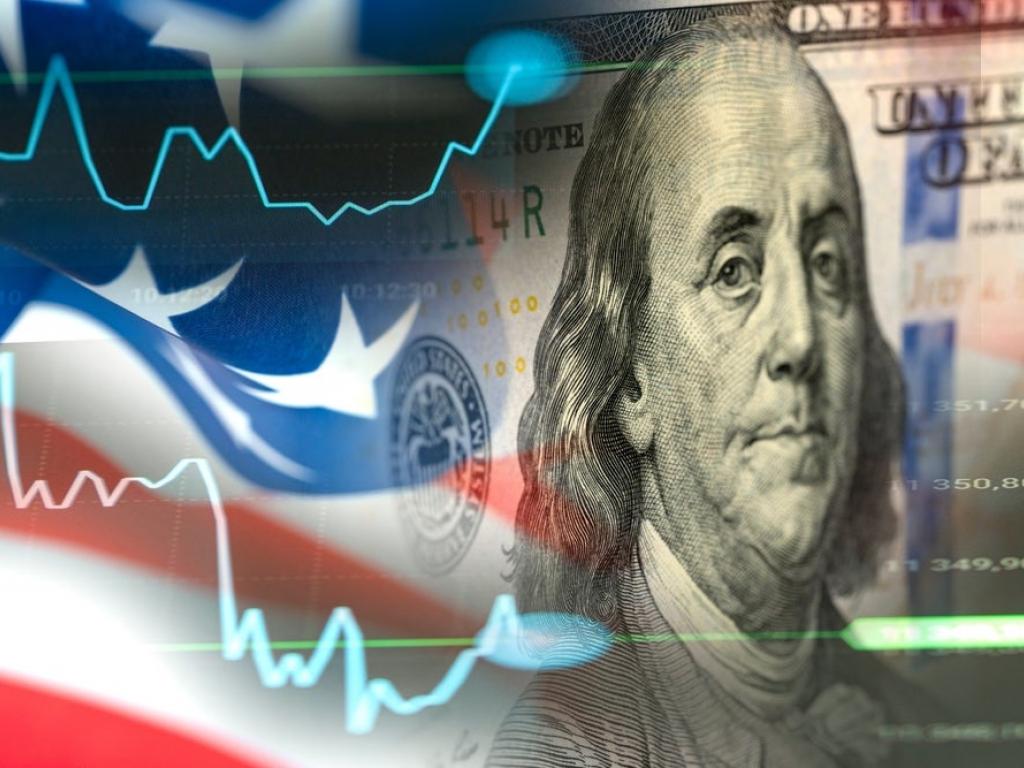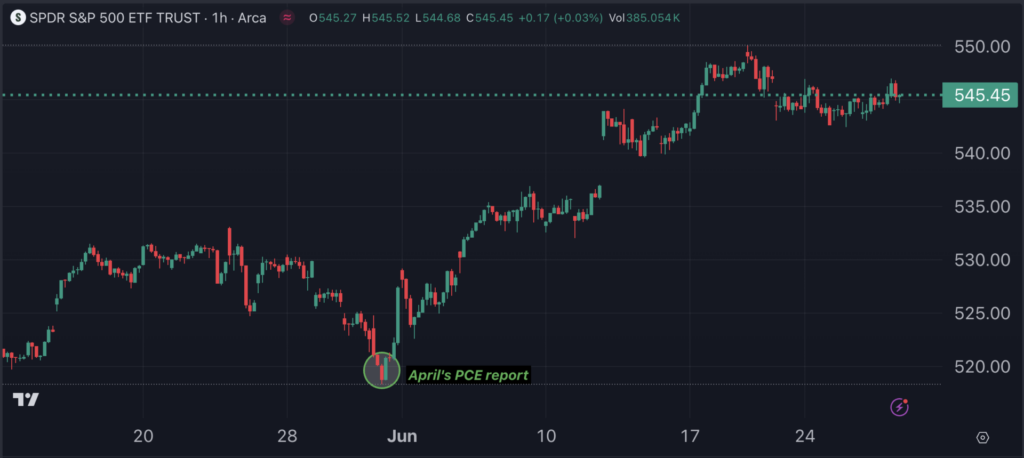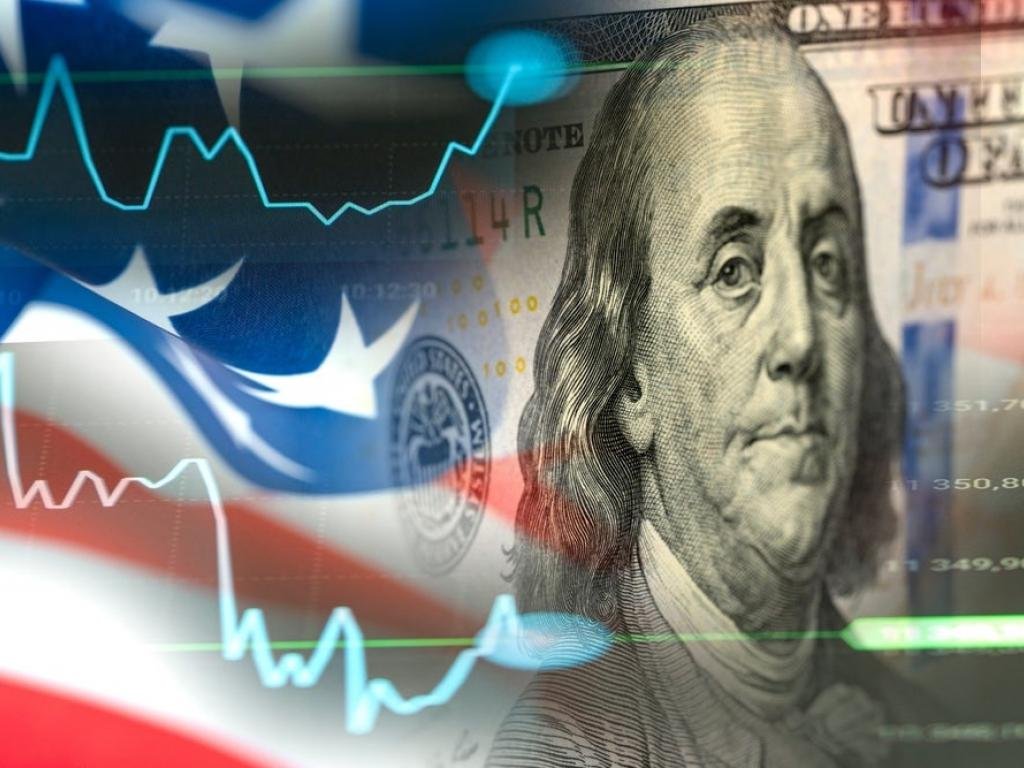
The Personal Consumption Expenditures Price Index, an inflation report closely watched by the Federal Reserve, was released on May 31 for April, sparking a new market rally in June, propelling major indexes to record highs.
As traders prepare for the May PCE Price Index report, scheduled for release at 8:30 a.m. ET on Friday, many are wondering whether new favorable inflation data will bring bulls back to Wall Street after the mixed performance in recent sessions.
May PCE Report: What Do Economists Expect?
The PCE price index is expected to fall to 2.6% year-over-year in May from 2.7% in April, according to consensus data from economists collected by Econoday.
On a monthly basis, the index is forecast to rise 0.1%, down from the previous 0.3%.
The core PCE price index is expected to fall to 2.6% year-over-year from 2.8% in May, potentially hitting its lowest level since March 2021.
On a monthly basis, it is expected to slow to 0.1% from 0.2%.
If PCE inflation falls as expected or even further, it would raise investor expectations of a rate cut and potentially revive hopes that a rate cut could come as early as September, which would be welcomed by the market.
Traders are pricing in a 65% chance of a Fed rate cut in September. Overall, they are pricing in a 50 basis point cut (the equivalent of two rate cuts) by the end of the year.
Fed’s closely watched PCE report due out on Friday: What happened last time?
PCE headline inflation was stable at 2.7% year-over-year in April. The core PCE price index also increased 2.8% year-over-year, in line with expectations but slightly lower than the monthly forecast (0.3% vs. 0.2%).
Data on personal consumption and personal income was slightly weaker than expected, raising hopes that the economy will cool and inflationary pressures will continue to ease.
This has raised expectations that the Fed will likely cut interest rates twice before the end of the year.
Stocks reacted favorably to the April PCE report. SPDR S&P 500 (NYSE:SPY) was up 0.9% on the day.
Notably, this data marked a key turning point in June’s bullish trend reversal, as shown in the chart below from Benzinga Pro.

Other major ETFs to watch on Friday
Traders will be closely monitoring the broader stock market as well as the following major asset classes to gauge the overall market reaction to the PCE inflation report:
- US Dollar Index: Tracker Invesco DB USD Index Bullish Fund ETF (NYSE:UUP) If inflation falls short of consensus expectations, the dollar could fall, but if it exceeds expectations, the dollar could rise in response to the market’s interest rate expectations.
- Long-term US Treasury bonds: Measuring method iShares 20+ Year Treasury ETF (NASDAQ:TLT) A weaker than expected PCE report could push down bond yields and boost the value of Treasury-related ETFs, and vice versa.
- Gold PriceThrough surveillance SPDR Gold Trust (NYSE:GLD) Gold generally moves inversely to the dollar and yields, and a weaker than expected PCE report could raise hopes of a Fed rate cut, making gold more attractive.
- Russell 2000 Index: Duplicated iShares Russell 2000 ETF (NYSE:IWM) Small-cap stocks, which have significantly underperformed the S&P 500 and Nasdaq 100 this year, could benefit from lower inflation as they are less pressured by high interest rates, which have a bigger impact on them than larger stocks.
Read now:
- First-quarter GDP growth revised up, but consumer spending weakens and jobless claims hit three-year high: Thursday’s Economic Digest

